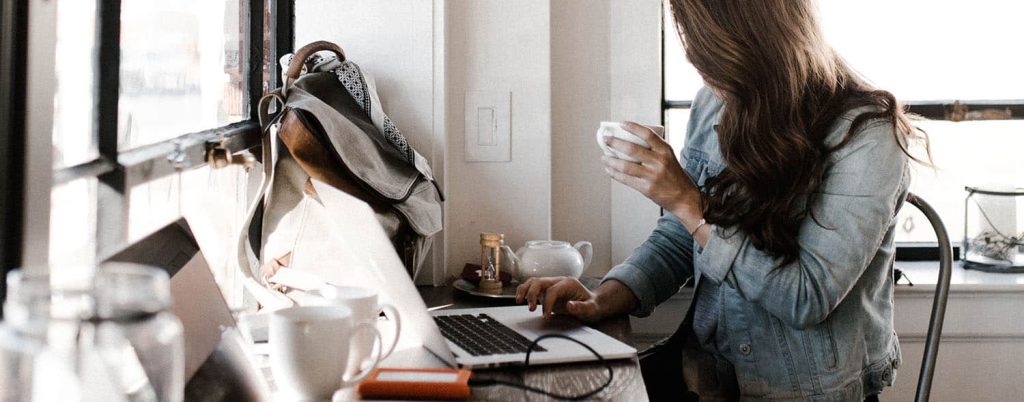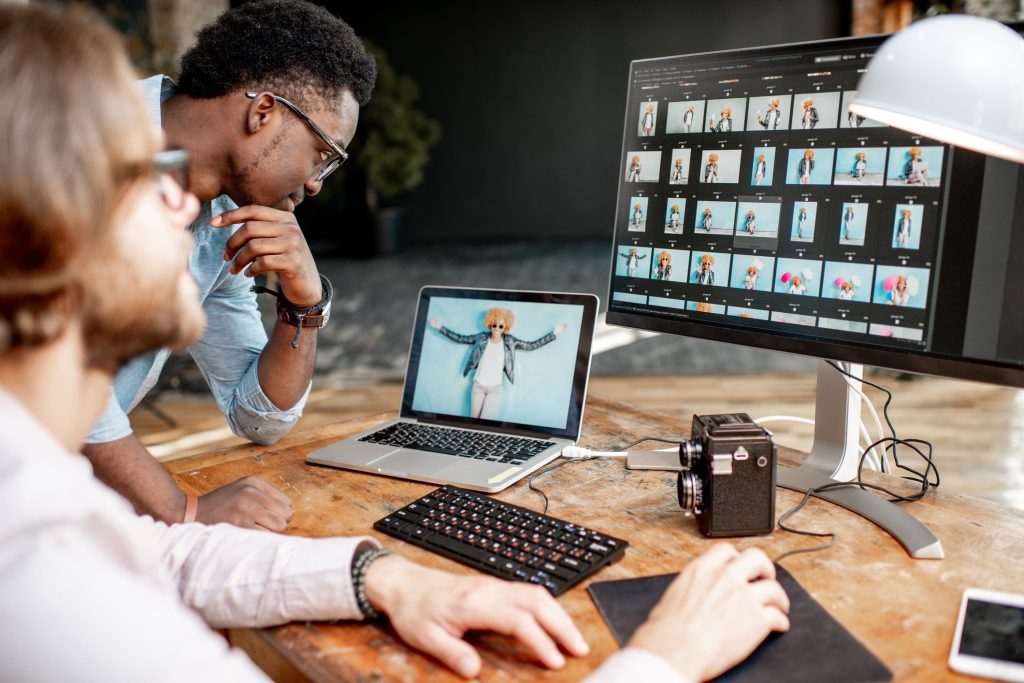
Growing photography businesses need to work smarter, not harder! That’s where AI photography software comes in…
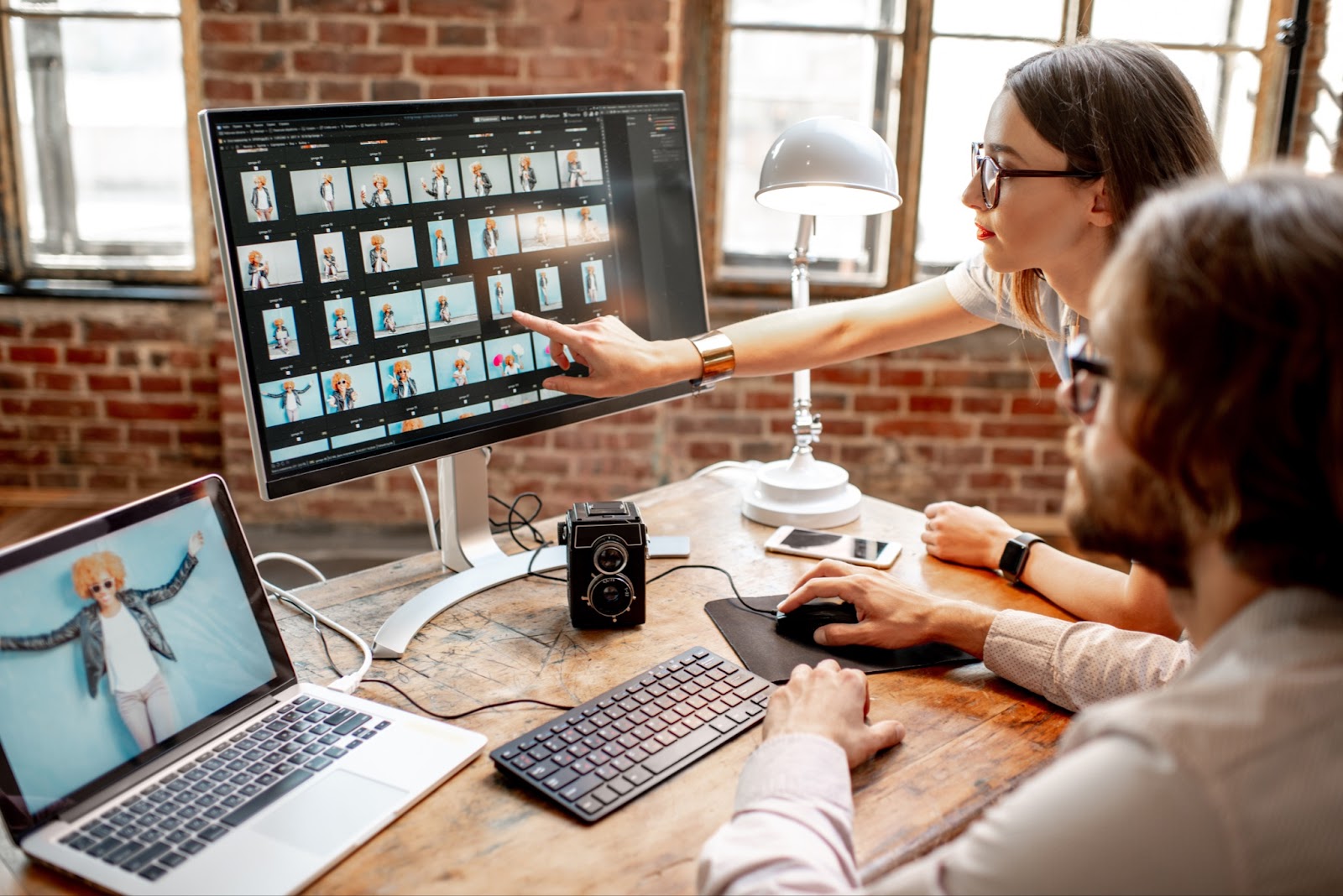
Despite what people think, we photographers spend more time in front of the computer, reviewing and editing photos, than we do behind the lens. For many photographers, this can lead to some serious burnout.
Now imagine if you could cut that time in half. What would you do with all that freedom? You could use that time to focus on marketing, networking, learning a new skill, or just going out and enjoying life.
Good news is, you can now totally make that happen thanks to these AI photography tools.
AI Image Editing vs. Outsourcing
While sending off your images for third-party culling, straightening, and/or editing is still a great option, I believe using AI software might be a better one.
Reason being outsourcing editing takes longer. You have to wait in line for your editor, and then you have to wait for the editor to actually finish. With AI software, you’ll have your images back in minutes vs. days. Additionally, you are often dealing with multiple editors. That means things might be a little different from job to job. The software does everything based on calculations, so every job should be similar.
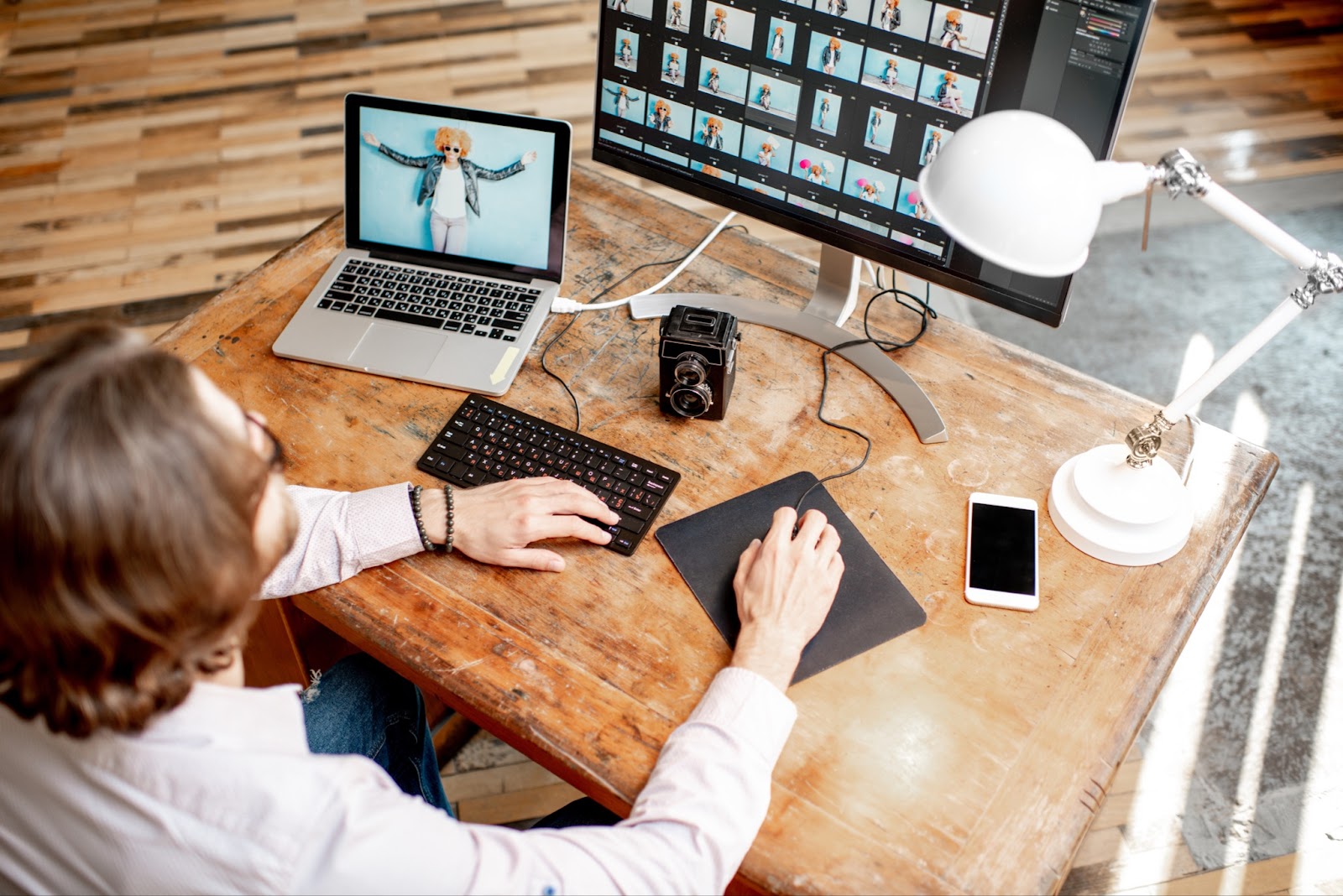
What Can AI Software Help Photographers With?
AI photography tools can help photographers immensely when it comes to:
- Culling
- Editing, including cropping and straightening
- Retouching or adjusting the basics like exposure, contrast, and white balance, plus removing blemishes!
Let’s look at some of the ways AI helps photographers accomplish these tasks, and what your options are software-wise.
Culling Photos Faster with AI Software
I’m a wedding photographer, which means I might have 3,000 photos from a single wedding day. In the past, I’ve spent hours going through all those images individually and deciding what was worth keeping. Now, that time has been drastically reduced.
The way AI culling works is, you first set parameters the AI will evaluate photos against.
You might want fewer duplicates of similar poses, or to be really strict about eyes closed or out of focus shots. Then the software runs through all your images, and rates and labels them based on that selection criteria, or if they’re out of focus.
Once the software has done its thing, I would suggest you go back through them. You’ll probably want to reduce the number of selections even more, and make sure you aren’t missing anything.
For me, I only look at the selections/picks. As I’m going back through, I’ll mark any that weren’t great and didn’t have another option in the picks. Then, I’ll go back to all the images and see if I can replace the original selected image.
Your options for AI culling software
There are three main AI culling software options that I’ve seen and used: Aftershoot, Imagen, and Narrative Select.
They all do basically the same thing, but still, there are small differences that might make you choose one over the other.
Narrative Select is very quick and easy when you are going through the picks. I tried this AI culling tool out about a year ago. I appreciated how it automatically finds all the faces and puts close-ups on the screen, so I can quickly look at the faces and make a decision. However, I wasn’t fond of the AI portion, which seemed to take forever and would freeze at times.
AfterShoot – I’ve been using AfterShoot for over a year, and it seems to do a much better job in automatically selecting photos, although it is a little more clunky when going through the selections.
I’ve tried to change the ratings and realized nothing was changing. I’m sure I’m just doing something wrong, but it should be easier. For Aftershoot, I normally just go to Lightroom to make the final picks.
Imagen starts with a Lightroom catalog, so you have to create that first, and then you can change your choices there. From what I’ve seen, you can only send your final selections back if you move to editing through Imagen.
I don’t have as much experience with Imagen, but I did notice it was marking photos as unique even though similar ones were right next to it. I also wish there was more control of the selection like there is in Aftershoot.
How much does AI culling software cost?
All three options are subscription based, so you won’t be paying per image:
- Narrative currently charges $15 per month
- AfterShoot costs $15 a month, or $120 for the year
- Imagen is currently in beta, so that price isn’t available

Edit FAST with AI Image Editing
For the past 5-10 years, I’ve been trying everything I can to minimize my time editing. I’ve tried multiple editing companies, using a gray card while shooting, and now AI editing software. Out of all the things I’ve tried, the AI software has been the best option for saving me time and being accurate.
With AI editing software, it learns your style. At the beginning, you upload thousands of your finished images to create a profile. Then, later, you can refine it by uploading your corrections to their edits. With traditional editing companies, you tend to pick a style, and then they edit how they want to.
The turnaround time with AI image editing is also crazy fast. I haven’t timed it, but I can upload a whole wedding and get it back within an hour, maybe less. With outsourcing, you’re lucky if it takes several days, maybe a week.
Two ways of using AI editing software
Depending on the pricing structure, I might use an AI tool one of two ways.
Imagen AI charges users per image, meaning the more images I upload, the more it costs me. When using this tool, I’ll typically first go through an entire shoot and pick one or two images from each lighting situation or pose. Those are what I upload to Imagen AI. Then, when I get the edits back, I copy and paste the edits in Lightroom to the similar images. This usually takes time because I have to go back and make small changes to every image, but it keeps the cost low.
Aftershoot, on the other hand, is a subscription, which means I can send as many images as I want. When using this AI tool, I’ll take all my selections and run them through the software. While I could run every single image, I’d rather things move faster since I’m not going to be using them all anyways.
Once the software is done, you might be done, or you might want to go through and make changes. That will depend on what you are doing with the images. Are you delivering these to the client? Are they for viewing and ordering? For some, a quick look in the grid view should be enough to see if there are any major issues, though I tend to run through every single image and make small changes.
How much does AI editing software cost?
As mentioned above, the cost for using AI to edit your photos will vary depending on what structure you use. When I was using Imagen, I would spend roughly $10-20 per wedding. This was just for editing at $.05 per image. You can also add cropping and straightening for $.01 per image.
AfterShoot Edits, Aftershoot’s editing software, is still in beta, so I don’t know how much the yearly subscription will cost. It would be really nice if they packaged it with the culling product for a great deal.
Retouching Photos with AI Photography Software
If you find yourself retouching a majority of your portraits, there are a few AI photography tools that could do all that work for you. They can do things like skin softening, blemish removal, enhancing teeth and eyes, and even reshaping faces and bodies.
Your options for AI retouching tools
I’ve tried a few AI tools to edit portraits over the years, including: Luminar, On1, and Portrait Pro. It’s amazing how they all have evolved and now can use AI to edit portraits.
Luminar and On1 are more of a complete editing suite. You can use them to sort photos and make basic adjustments, as well as more complicated edits. These could be replacements for Lightroom and Photoshop.
PortraitPro has a few different pieces of software that do different things (PortraitPro and PortraitPro Body). They are really only made to tackle the kind of the editing you would do in Photoshop, and can’t be used like Luminar or On1.
How much do AI retouching tools cost?
All three retouching tools mentioned above offer both subscriptions or one-time purchase options. I tend to go with the latter. They do come out with new versions relatively often, so you will need to upgrade from time to time.
- Luminar Neo currently costs $150
- On1 is $99
- PortraitPro is $180
- PortraitPro Body is $60
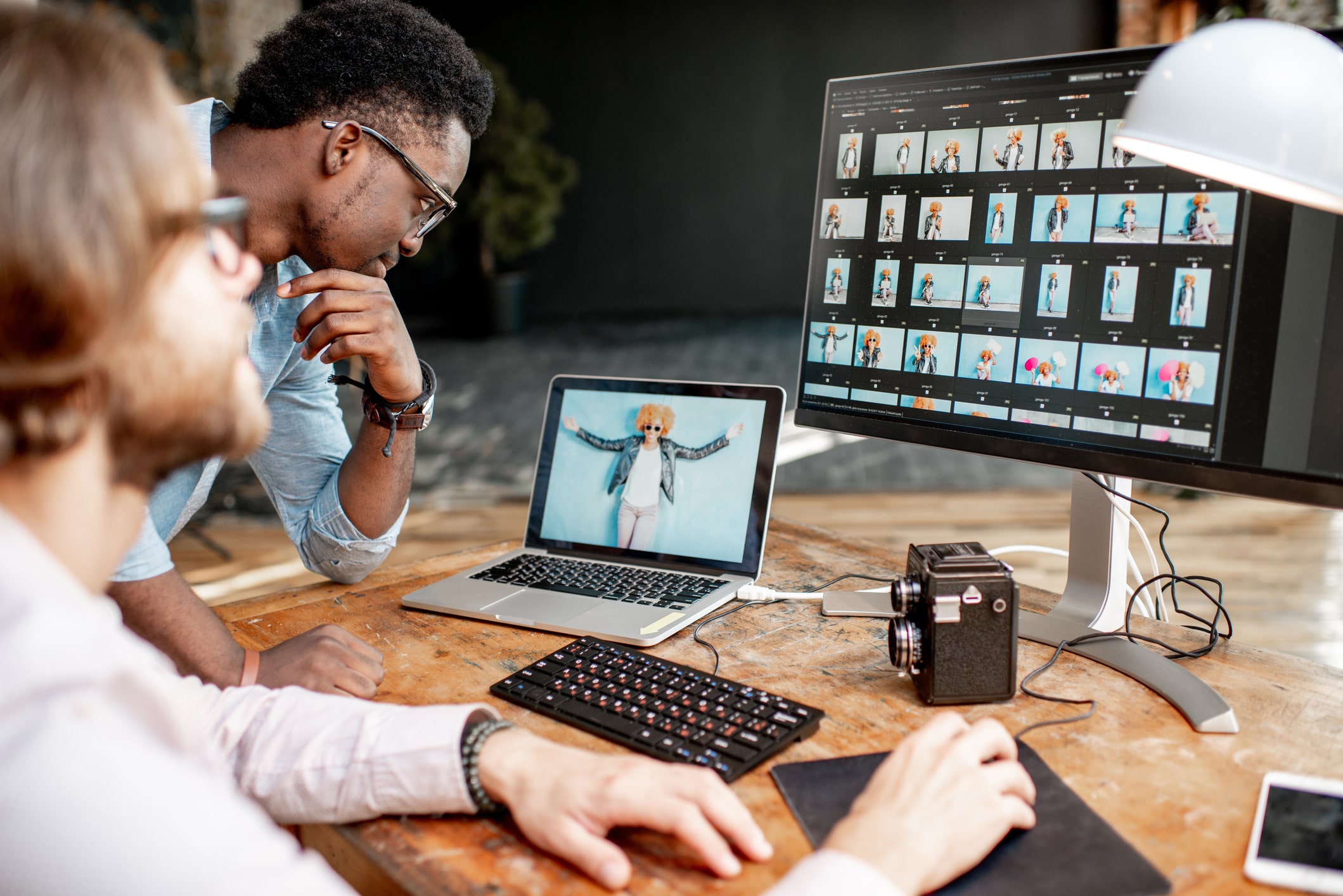
Other Ways AI Can Help Your Photography Business
One thing that I struggled with last year was creating blog content and social media posts (along with a few other writing tasks). Luckily, I’ve found a way to knock out all of my writing tasks quickly, and without very much effort. And that’s with — you guessed it — AI writing tools.
Why Photographers Need AI Writing Tools
I like to think I’m a decent writer, but still, writing can take up a ton of time. I know I’ve sat there and thought about what to put in a blog for what seemed like hours. Even when I’m doing great, a blog post might take me 30 minutes to an hour to write.
Photographers need AI writing tools because we’re already strapped for time! And using them helps save tons of time and can potentially make the final result even better.
How Can Photographers Use AI Writing Tools?
I’ve been mainly using AI writing tools for blog writing, since they can help me find topics, create an outline, and even write all the paragraphs.
Here are a few other great ways photographers and AI can team up when writing:
- Website copy: What you say on your website can either attract or scare off clients
- Emails: Create emails for all types of situations from responding to clients to trying to book cold leads
- Sales scripts: Learn key phrases to use in certain situations and for common objections
- Social media posts: Write interesting stories or captions for your photos
- Ads: Attract the perfect customer with ad copy that fits your style
Your options for AI writing tools
The most well-known and established AI writing tools include Chat GPT, Jasper, Rytr, and Word Hero.
Out of all of them, I have the most experience with Jasper, and overall, I believe it’s the best tool. It’s constantly being updated, it has a lot of templates or formulas, and in the long-form editor, you can just hit a keystroke and it will continue writing for you based on what was said before.
Tips for Photographers Using AI Writing Tools
I’ve played around with these tools for over a year now, and there are some things that will help you be successful.
#1: Read and fact check
There have been so many times where I had to make changes. Either the writing didn’t make sense or there were inaccurate facts. Make sure you read everything and do research.
#2: Add your own thoughts and voice
Don’t rely completely on these tools for your writing. It’s ok to let it do the majority of the work, but your writing needs to sound like you. You can even add in examples or stories from your life to make it more personal.
#3: Check for plagiarism
As I mentioned before, I’m paranoid about plagiarism. Even though I don’t think it will be an issue, run anything you plan on publishing through a plagiarism checker. I’ve used Copyscape in the past.
Are AI Photography Tools Worth It for Photographers?
The world of AI software isn’t for every photographer. Plenty have been fine without it for years. Whether or not it’s right for you will come down to how you answer a few questions:
- How much is your time worth?
If you spend 10 hours culling and editing on the computer every week, that’s an entire work day right there! Imagine what you could do with that extra day.
I bet the cost of one of these AI tools is significantly lower than the value of 520 hours of your time over the course of the year.
- Do you enjoy culling and editing?
Some people enjoy the process. I do not, so these tools are worth it to me to cut my editing time in half.
- How much do you shoot?
If you are only a hobbyist and shoot once every other month, this software might not be worth it. But if you’re dealing with multiple sessions and/or thousands of photos every month, it can definitely help you optimize your workflows.
Who knows? Taking a shot on a free trial could be the key to gaining more time and freedom.
Written by BRYAN STRIEGLER
Bryan Striegler is a wedding photographer who loves superheroes, sports, and Skittles. Along with his two big fluffy dogs and crew of kids, Bryan lives in Northwest Arkansas where, in his free time, he’s constantly searching for the next great Netflix binge.

